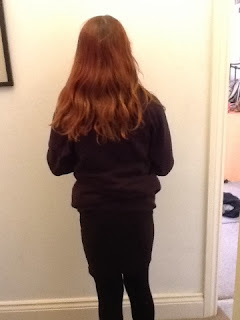Story
Graham Harvey was diagnosed as a paranoid schizophrenic at the age of seventeen. After trying counselling and various medications, Grahams condition continued to further decrease rapidly, which resulted in him being placed into a mental asylum, Linden House. After spending four years confide to a cell with minimal contact with the outside world, Graham was eventually released. Struggling to come to terms with the world outside of the building, further counselling sessions and support meetings were set up in order to help him find his feet, and he was placed on medication to help control the paranoia he was constantly feeling.
After managing to secure a job as a warehouse assistant for a local retailer, Graham's confidence increased and he soon found himself many close and supportive friends, one of which being Sophia. After pining over her for almost six months, Graham finally found the courage to tell her how he felt, and to his luck and surprise, his feelings were reciprocated. A year on, the couple married and at the age of 24 Sophia gave birth to a beautiful baby girl, Iona, where they then relocated from Haywards Heath to the town of Crawley.
Satisfied that he had managed to turn his life around, at the age of thirty two Graham, with the support of his family, stopped all counselling sessions and took himself off of his medication. However, after just four months he found himself reverting back to his old ways, and his actions began to worry Sophia. Convinced the voices inside his head had returned, Graham became violent towards his wife and daughter, claiming that he was following the instructions of the Devil. Fearing for her daughters safety, the pair separated nine months later, and Sophia left with Iona to live with her mother. After a lengthy and stressful two year divorce process and custody battle, at the age of thirty five, Graham was denied all contact with his now eleven year old daughter.
Devastated and unable to convince the judge that he was fit to be around his daughter, Graham devised a plan to kidnap Iona. Breaking conditions of the divorce and all restrictions placed upon him, he waited outside Iona's primary school, claimed he was Sophia's brother and had come to take her home, before leading her towards his car and driving her to his house. There he tried reasoning with Iona, attempting to convince her that everything she had been told about him had been a lie. But when she tried to leave he grew angry and frustrated. As she desperately tried to make for the door he grabbed her by the hair and pulled her to the ground where she then hit her head and was knocked unconscious. Horrified by the way he had behaved, Graham began to panic, and the voices that he had tried so desperately to control returned, and before he knew it he was carrying his unconscious daughter to the only place he knew he would be safe.
***
Running late due to a meeting she was unable to leave work, Sophia called Iona's primary school to inform them she will be picking her daughter up slightly later than usual, but was told that her brother had already collected Iona. Confused, she rang her brother, only to find that he had been up North for the last two days because of work, and wasn't due home until the following day. Extremely panicked by this point, Sophia then alerted the police where an immediate search party was organised. However, the police already had their prime suspect.
Aware of what Graham was capable of, they rung up the warehouse he worked in, only to find that he hadn't turned up for work that day. With alarm bells now ringing frantically, the search was on to find Graham Harvey.
After two days of searching the police found nothing, and with the case being now high profile, they became desperate for any information. After thoroughly searching all over Crawley and the surrounding area, the police, as one last desperate attempt, asked Sophia if there was anywhere she could think of that he might possibly be, anywhere that had any specific importance to him or anywhere that he he had briefly mentioned before. And then it hit her. Linden House. With this one last vital piece of information, the team jumped straight into action and drove fifteen miles to the now abandoned building that was once Grahams home. And sure enough, there he was. In his cell, Graham waited, sat bolt up right, with his legs cross and hands in his lap, grinning from ear to ear.
Back at the police station he told them how he had done it. He willingly and, perhaps, eagerly told them how he had cussed at her, beaten her, felt her pulse slow rapidly as his hands tightened around her neck. How he had seen the fear on her face, and laughed. How he had watched the life disappear from her eyes, and felt satisfied. But he never told them what he had done with the body.
Beth







































.jpeg)
.jpeg)











